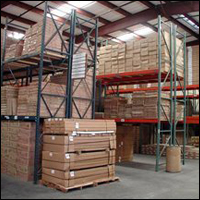India’s total requirement for warehousing space is expected to grow at a compounded annual growth rate of 9 percent from 919 million sq. ft in 2014 to 1,439 million sq. ft. by 2019, according to a recently released report on the logistics sector by global real estate consultancy Knight Frank.
Titled ‘India Logistics & Warehousing Report 2014’, it focuses on the warehousing segment of the logistics sector and provides a definitive view on the key warehousing markets of Mumbai and Pune.
The significance of the logistics sector had for long been ignored by Indian businesses, the report said, adding that it remained one of the most under invested sectors in the country. It pointed out that inefficiencies in managing logistics, which played a critical role in connecting production centres with consumption markets, could lead to severe disruption in the entire supply chain network.
“In India, the experience with regards to this sector has not been very encouraging, thus leading to colossal losses during transportation, distribution and storage of goods,” the report said.
The logistics sector is broadly classified into three areas – transportation, distribution and storage. The warehousing segment constitutes only 15 to 35 percent of total logistics cost.
The report said that manufacturing would continue to remain one of the biggest demand drivers of the warehousing segment with an annual requirement of 61 million sq. ft of incremental space between 2014 and 2019.
Given the government’s renewed focus on incentivizing the manufacturing sector, the logistics market expects to reap the benefits in the coming years.
The report draws attention to the challenges faced by investors in warehousing projects.
Acquiring suitable land, which constitutes the largest component of a warehousing project, posed the biggest challenge to investors, the report said.
Whereas the rental that a warehouse owner can charge is driven by demand and supply factors, the land prices depend upon multiple factors such as development control regulations, infrastructure development and best alternate usage of land. When growth in rental income is outpaced by the growth in land value, the warehouse developer’s return expectation fails to match with the ongoing market value of the land.
Investment in warehouse, the report said, could provide an opportunity of realizing returns in the range of 12 to 20 percent per annum.
At present, a major challenge facing investors is the lack of understanding of the various nuances of the sector.
The objective of the report, primarily targeted towards institutional investors, real estate developers, high net worth individuals and private equity funds planning to participate in investment opportunities provided by the warehousing segment, is to not only familiarize with different aspects of the warehousing industry but also provide actionable advice on investment opportunities in the current scenario.











